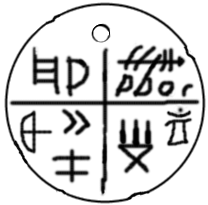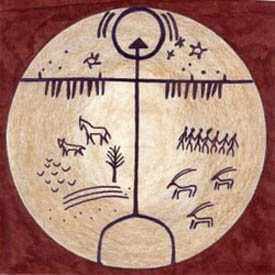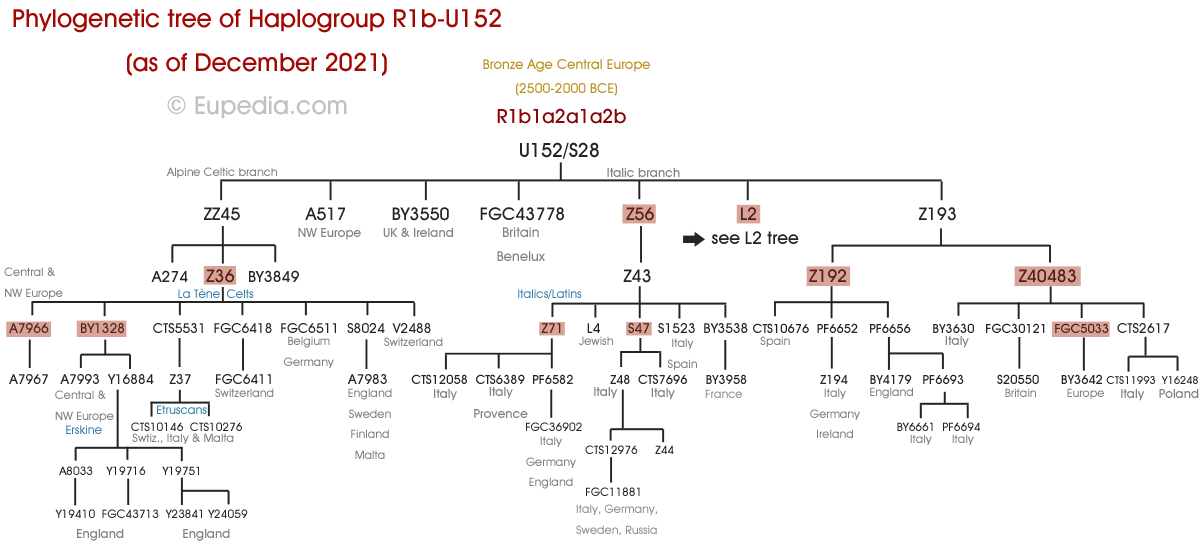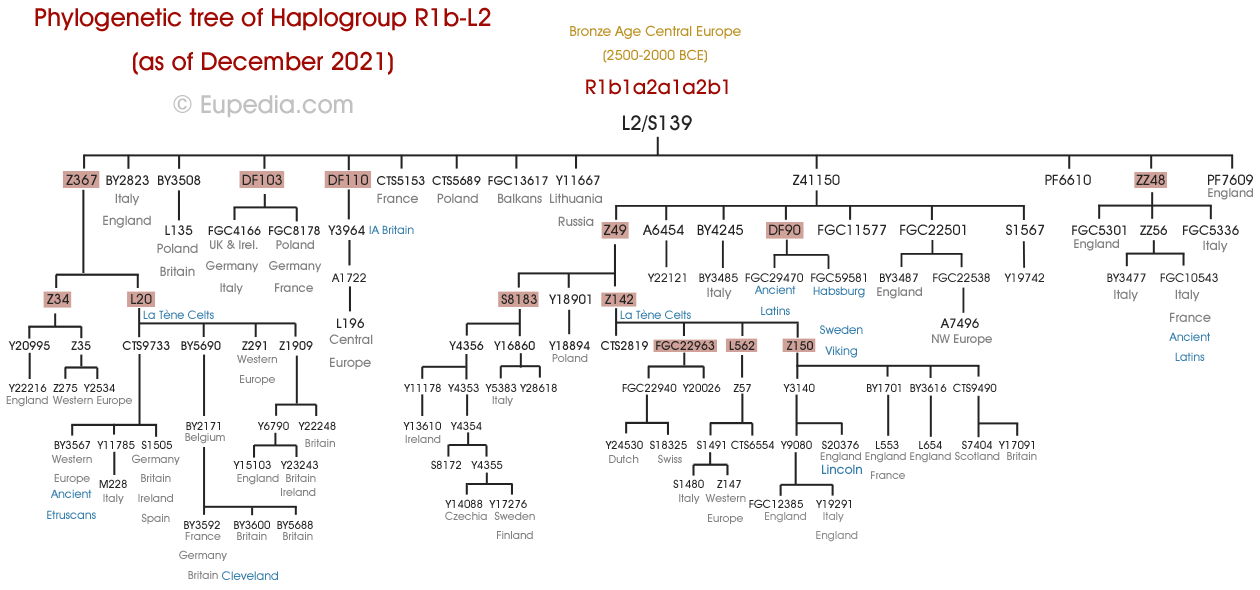| I2a2 + R1b-M269 |
|
|
08/02/17 |
|
|
|
|
|
|
|
|
|
|
|
|
|
|
|
|
|
|
|
|
|
|
|
|
|
|
|
|
|
| Dnjepr rapids HG |
|
|
|
|
|
|
|
|
|
|
| HG |
Ukraine |
Dnjepr Rapids |
|
10,8 ka |
> I2a2a-M223 |
|
|
Ukraine_HG1 Mesolithic I2a2a-M223 calls |
|
|
| Yamnaya Samara/Kalmykia |
|
|
|
|
|
|
|
|
|
|
| Yamnaya Samara |
Russia |
Lopatino I, Sok River, Samara [I0429/SVP 38] |
M |
3339-2917 BC |
R1b1a2a2* (Z2103) |
Z2105+, L23+, L150+, M269+, L584- |
T2c1a2 |
Haak 2015; Mathieson 2015; Sergey Malyshev |
|
|
| Yamnaya Kalmykia |
Russia |
Peshany V [RISE550] |
M |
3334-2635 BC |
R1b1a2 |
PF6399, M520, L773, PF6430, PF6434, PF6438, CTS8728, PF6497, PF6500;
Malyshev reads R1b1a2a2 (Z8129/Y12537 equivalent Z2103) |
U5a1i |
Allentoft 2015; Mathieson 2015; additional info from Sergey Malyshev |
|
|
| Yamnaya Samara |
Russia |
Lopatino I, Sok River, Samara [I0439/ SVP 52] |
M |
3305-2925 BC |
R1b1a2 |
PF6434, PF6475, L1353, M173+, M343 equivalent CTS910/ FGC66 /PF6244+; P297+, M269 equivalent CTS12478/ PF6529+, L51-, L584-, Y4370- M12147-, 14168106(A/G)+ |
U5a1a1 |
Haak 2015; Mathieson 2015; Sergey Malyshev |
|
|
| Yamnaya Upper Ural river |
Russia |
Ishkinovka I, Eastern Orenburg, Pre-Ural steppe, Samara [I0370/SVP 10] |
M |
3300-2700 BC |
R1b1a2a2 (Z2103) |
CTS1078+, M269+, L150+, L320+ |
H13a1a1a |
Haak 2015; Mathieson 2015; Sergey Malychev |
|
|
| Yamnaya Samara |
Russia |
Lopatino II, Sok River, Samara [I0443/ SVP 57] |
M |
3300-2700 BC |
R1b1a2a* (L23) |
L49+, L23+, PF6399+, L150+, L1353+, PF6509+, M269+, CTS12478+, L51-, Z2105- |
W3a1a |
Haak 2015; Mathieson 2015; Sergey Malychev |
|
|
| Yamnaya Samara |
Russia |
Kutuluk I, Kutuluk River, Samara [I0444/SVP 58] |
M |
3300-2700 BC |
R1b1a2a2 (Z2103) |
CTS1078/Z2103+, L150+, M415+ |
H6a1b |
Haak 2015; Mathieson 2015; Sergey Malychev |
|
|
| Yamnaya Samara |
Russia |
Luzhki I, Samara River, Samara [I0438/SVP 50] |
M |
3021-2635 BC |
R1b1a2a2* (Z2103) |
Z2105+, L23+, L320+, L584-, CTS7822- |
U5a1a1 |
Haak 2015; ; Mathieson 2015; Sergey Malychev |
|
|
| Yamnaya Samara |
Russia |
Ekaterinovka, Southern Steppe, Samara [I0231/SVP 3] |
M |
2910-2875 BC |
R1b1a2a2 + KMS75 |
CTS1078+, Z2105+, S20902+, M343+, L754/ PF6269/ YSC22+, P297 equivalent FGC57+, M269+ (+ same level PF6399+, PF6434+, PF6482+, , L150.1+, L265+), L23+, CTS1078/ Z2103+ (+ same level Z2105+), L584-, KMS75+ |
U4a1a or U4a1d |
Haak 2015; Mathieson 2015; Sergey Malyshev |
|
|
| Yamnaya Kalmykia |
Russia |
Temrta IV [RISE546] |
M |
|
R1b1a2 |
PF6482 |
U5a1d2b |
Allentoft 2015; Mathieson 2015 |
|
|
| Yamnaya Kalmykia |
Russia |
Temrta IV [RISE547] |
M |
2887- 2634 BC |
R1b1a2 |
L482, L483, PF6438, L150.1, F1794, CTS8728, L1353, PF6495, PF6497;
Malyshev reads R1b1a2a2 (CTS9416) + Z2106 downstream on Y-Full tree |
T2a1a |
Allentoft 2015; Mathieson 2015; additional info from Sergey Malyshev |
|
|
| Yamnaya Kalmykia |
Russia |
Temrta IV [RISE548] |
M |
|
R1b1a2a2 |
Z2105 |
U4 |
Allentoft 2015; Mathieson 2015 |
|
|
| Yamnaya Kalmykia |
Russia |
Sukhaya Termista I [RISE240] |
F |
2880-2632 BC |
|
|
U5a1d1 |
Allentoft 2015 |
|
|
| Early Bronze Age Wolgograd |
Russia |
Stalingrad Quarry [RISE555] |
M |
2857-2497 BC |
R1b1a2 |
PF6399, PF6409, PF6434, CTS623; Malyshev reads R1b1a2a2 (CTS7340/Z2107) + downstream Z2106 onYFull tree |
N1a1a+152 |
Allentoft 2015; Mathieson 2015; additional info from Sergey Malyshev |
|
|
| Yamnaya / Catacomb Kalmykia |
Russia |
Ulan IV, kurgan 4, grave 8 [RISE552] |
M |
2849-2146 BC |
I2a2a1b1b |
L699; Malyshev reads I2a2a1b1b2 (S12195) |
T2a1a |
Allentoft 2015; Mathieson 2015; additional info from Sergey Malyshev and Felix Immanuel |
|
|
| Iberian Chalc / pré-BB |
|
|
|
|
|
|
|
|
|
|
|
Spain |
El Portalón, Sierra de Atapuerca [ATP 3] |
M |
5466-5312 cal BP |
Genetiker : R1b-M269 xZ2110 |
|
K1a2b |
Günther 2015 |
|
ATP3 Pre-Beaker Copper Age 3516–3362 BC R1b1a1a2-M269 calls |
|
Spain |
El Portalón, Sierra de Atapuerca [ATP12-1420] |
M |
4960-4829 cal BP |
I2a2a |
|
H3c |
Günther 2015 |
|
|
| Pre-Beaker Copper Age |
Spain |
Matojo El Portalón cave in the Atapuerca |
|
3010–2879 BC |
I2a2a2-S23680 |
|
|
Matojo Pre-Beaker Copper Age 3010–2879 BC I2a2a2-S23680 calls |
|
|
|
Spain |
El Mirador, Burgos [I0581/MIR 5 and 6] |
M |
2880-2630 BC |
I2a2a1 |
CTS616 |
X2b |
Gómez-Sánchez 2014; Mathieson 2015 |
|
|
|
Spain |
El Mirador, Burgos [I1274/MIR 11] |
M |
2880-2630 BC |
I2a2 |
L181 |
H3 |
Gómez-Sánchez 2014; Mathieson 2015 |
|
|
|
Spain |
El Mirador, Burgos [I1277/MIR 14] |
M |
2880-2630 BC |
I2a2a |
P221 |
H3 |
Mathieson 2015 |
|
|
| Vucedol |
|
|
|
|
|
|
|
|
|
|
| Vucedol |
Hungary |
Lánycsók, Csata-alja [M6-116.8] |
|
2860-2620 BC |
R1b |
M343+ |
T2b23 |
Szécsényi-Nagy 2015 thesis |
|
|
| Vucedol |
Hungary |
Lánycsók, Csata-alja [M6-116.10] |
|
2860-2620 BC |
I2a2a |
M223+ |
H5 |
Szécsényi-Nagy 2015 thesis |
|
|
| Unetice |
|
|
|
|
|
|
|
|
|
|
| Unetice |
Germany |
Esperstedt [I0114/ESP 2] |
M |
2131-1979 BC |
I2a2b |
L368+, L181+, P218+, P217+, M438+, L34-, P223-, M223-, [L39+] |
I3a |
Adler 2012; Brandt 2013; Haak 2015; Mathieson 2015; [Additional info on SNP L39 from Hans De Beule and Atanas Kumbarov] |
|
|
| Vatya/Wieslburg |
|
|
|
|
|
|
|
|
|
|
| Vatya |
Hungary |
Erd 4 [RISE479] |
M |
|
I2a2a1a2a |
L1229 |
T2b |
Allentoft 2015; Mathieson 2015 |
|
|
| Gáta/Wieslburg |
Hungary |
M85 Enese elkerül? 02. Kóny, Proletár-d?l? II [KON 6] |
|
1770-1760 BC |
R1b1a2 |
M269 |
U5b1 |
Szécsényi-Nagy 2015 thesis |
|
|
| Vatya |
Hungary |
Szazhalombatta-Foldvar [RISE247] |
M |
1746-1611 BC |
I2a2a1 |
CTS9183 |
H11a |
Allentoft 2015; Mathieson 2015 |
|
|
| Urnfield Lichtenstein Cave |
|
|
|
|
|
|
|
|
|
|
| Urnfield |
Germany |
Halberstadt [I0099/HAL 36] |
M |
1113-1021 BC |
R1a1a1b1a2
(Z280) |
S204+, S198+, PF6217+ |
H23 |
Brandt 2013; Haak 2015; Mathieson 2015 |
|
|
| Urnfield |
Germany |
Lichtenstein Cave, near Dorste, Lower Saxony [M1, M2, M7] |
M |
1000 BC |
I2a2b |
Ii in table 2; Z5REF in Ysearch |
H |
Schilz 2006 |
|
|
| Urnfield |
Germany |
Lichtenstein Cave [M3, M6] |
M |
1000 BC |
I2a2b |
Iii in table 2 |
H |
Schilz 2006 |
|
|
| Urnfield |
Germany |
Lichtenstein Cave [M14] |
M |
1000 BC |
I2a2b? |
Iii? in table 2 |
H |
Schilz 2006 |
|
|
| Urnfield |
Germany |
Lichtenstein Cave [M4, M5, M19] |
M |
1000 BC |
I2a2b |
Iiii in table 2 |
H |
Schilz 2006 |
|
|
| Urnfield |
Germany |
Lichtenstein Cave [M8, M16] |
M |
1000 BC |
I2a2b |
Ii in table 2; Z5REF in Ysearch |
U5b |
Schilz 2006 |
|
|
| Urnfield |
Germany |
Lichtenstein Cave [M10] |
M |
1000 BC |
R1a1? |
Ri in table 2 |
T2? |
Schilz 2006 |
|
|
| Urnfield |
Germany |
Lichtenstein Cave [M11] |
M |
1000 BC |
R1a1? |
Ri? in table 2 |
U |
Schilz 2006 |
|
|
| Urnfield |
Germany |
Lichtenstein Cave [M9] |
M |
1000 BC |
R1b |
Rbi in table 2 |
H |
Schilz 2006 |
|
|









